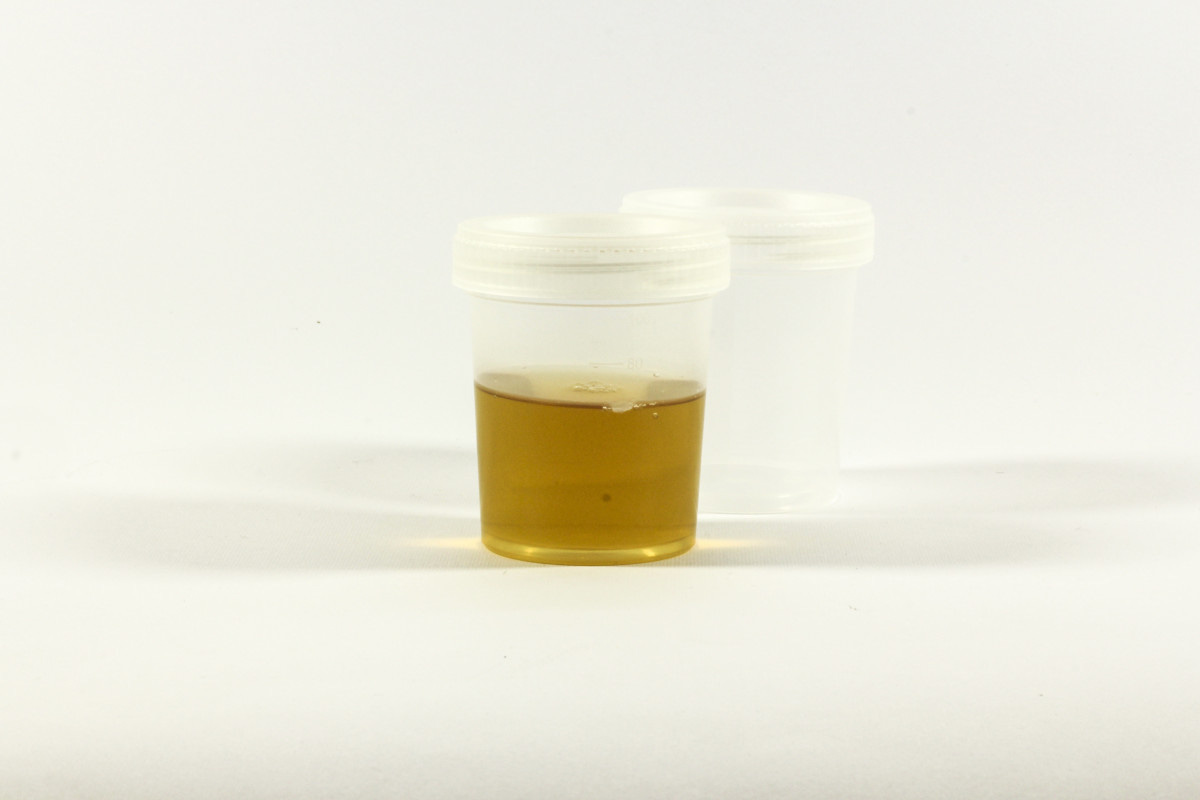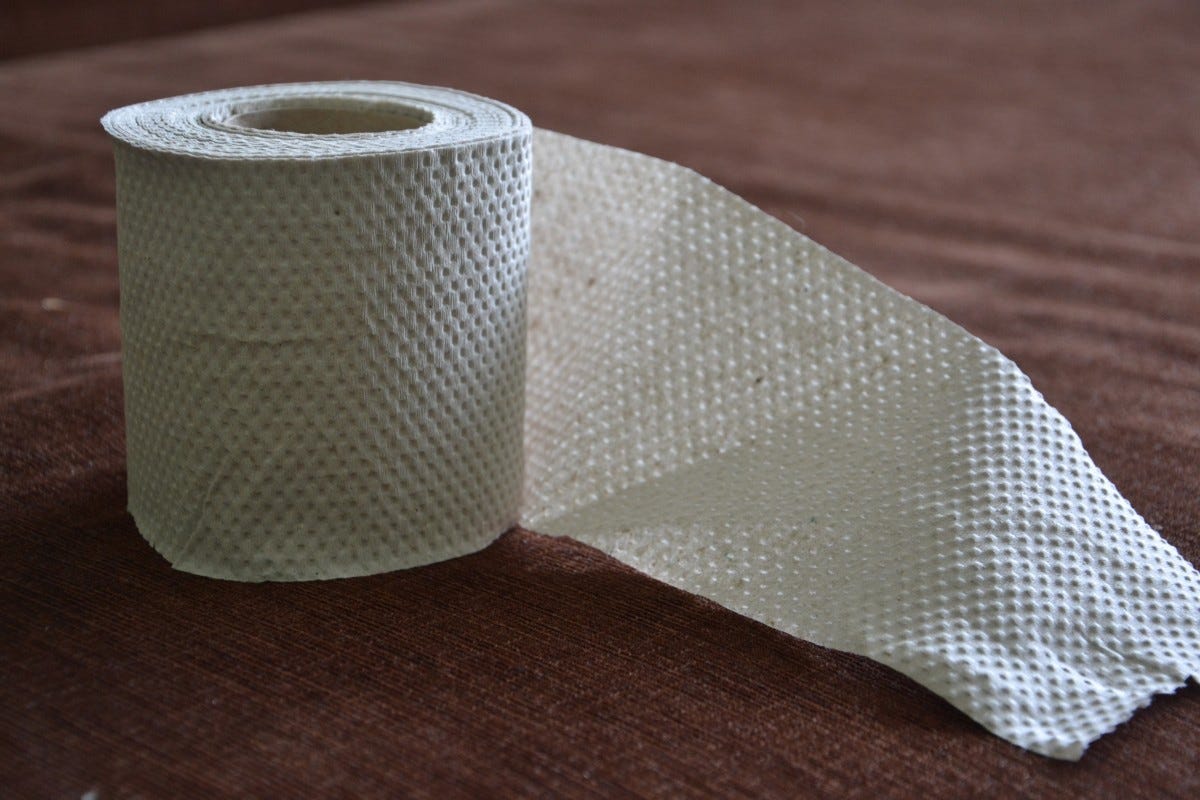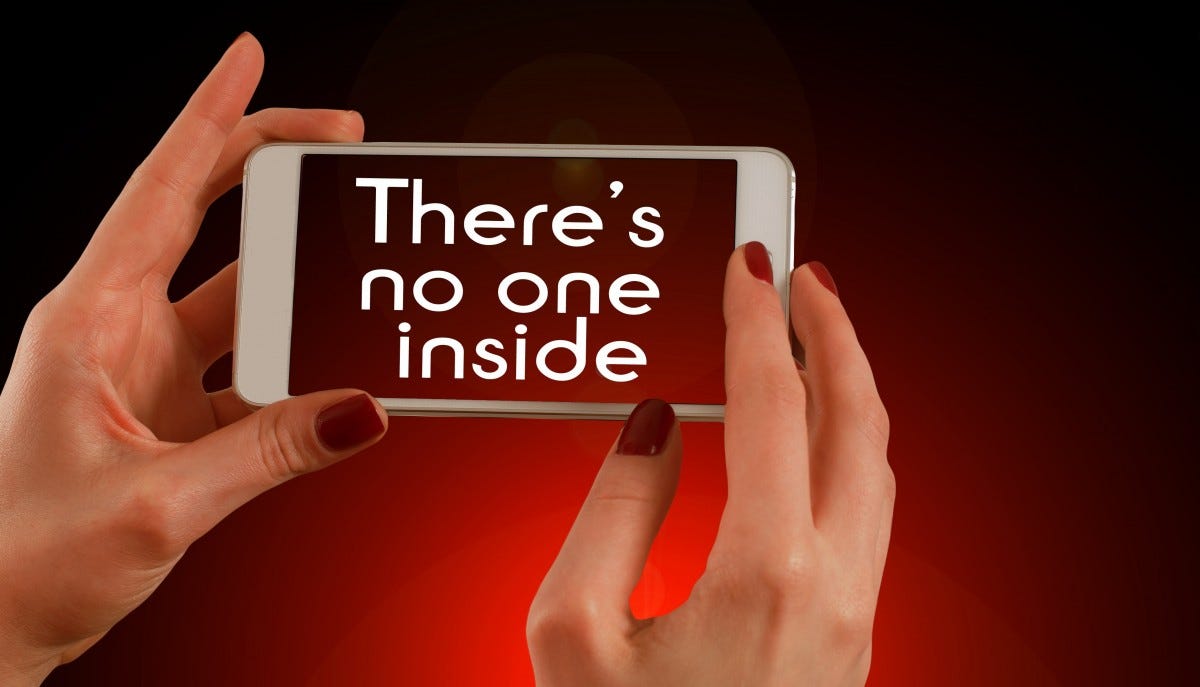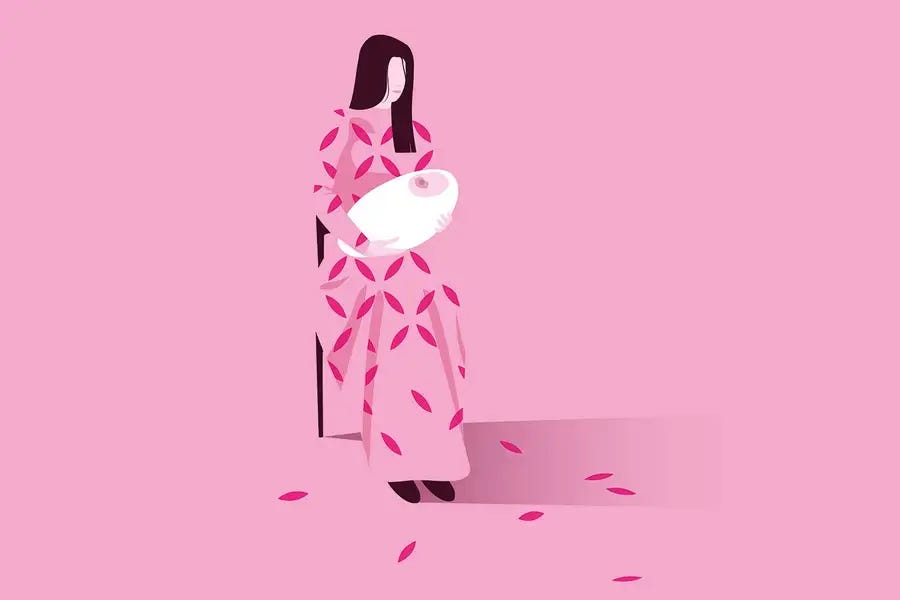Sci-Ed Update 309
Blue-eyed ancestor, urine luck, wondering about the vagus nerve, don't trust AI, parenthood issues, more!
Everyone With Blue Eyes May Descend From a Single Human Ancestor
In 2008, a study led by Hans Eiberg from the University of Copenhagen claimed that all blue eyes link back to a single ancestor who lived between 6,000 and 10,000 years ago. The concept has continually cropped up in news stories and social media posts over the 15 years since the paper was released. Simply put, we remain enamored.
But where did the concept come from? That 2008 study in was built on research that started in 1996, and it all focused on genetic exploration of the OCA2 gene.
The research shows that the OCA2 gene codes play a key role in the production of melanin, the pigment that colors hair, skin, and eyes. Eiberg's theory is that a mutation occurred between 6,000 and 10,000 years ago that switched on the ability for the gene to dilute brown eyes to blue.
"Originally, we all had brown eyes," he said in 2008. "But a genetic mutation affecting the OCA2 gene in our chromosomes resulted in the creation of a switch, which literally turned off the ability to produce brown eyes."
Read more→ AandP.info/j9c
Scientists Have Been Studying Your Pee and They Finally Have Answers
Until now, scientists somehow didn't know exactly what made pee yellow.
But that just may have finally changed. In a new study published in the journal Nature Microbiology, a multidisciplinary group of scientists out of the University of Maryland reported on their findings about a middleman enzyme called bilirubin reductase, which had long evaded researchers as they tried to figure out which precise compounds resulted in urine's distinct yellow hue.
To be clear, as Healthline reports, scientists had known for more than 125 years that on a high level, urine gets its color from the disposal of old red blood cells as they degrade in our livers.
But although the process by which urine became yellow was known, the middle-man of compounds couldn't be captured until genome sequencing technology became advanced enough to break down the building blocks of pee.
Read more→ AandP.info/k9e
The Pee Episode | Teaching Urinary & Renal Concepts'
Teaching renal anatomy & physiology is tricky and sometimes difficult. In The Pee Episode I’ll tell you how I know that for sure. Plus, I’ll share some possible strategies for providing the clarity needed to avoid confusion and that unhelpful kind of frustration that sometimes accompanies the renal module in our course. And there’s a song from Greg Crowther!
00:00 | Introduction
00:47 | Adventures With Tarzan
06:51 | Making Heads or Tails or Loops
20:32 | Sponsored by AAA
21:31 | Big Picture of Renal A&P
32:27 | Pee Values With Greg Crowther
34:34 | Sponsored by HAPI
35:39 | Scared?
41:39 | Sponsored by HAPS
42:33 | Urinalysis
50:17 | Staying Connected
To listen to this episode, click on the play button above ⏵ (if present) or this link→ theAPprofessor.org/podcast-episode-125.html
Bad News — You're Probably Wiping All Wrong. Here's What You Should Be Doing.
You’ve probably heard that few things in life are certain except death and taxes, but we’d like to add something else to the list: cleaning up in the bathroom.
So, since we have to do it, what’s the best technique?
The preferred method of wiping “is not wiping,” nationally renowned anal surgeon Dr. Evan Goldstein told us — Raj Punjabi and Noah Michelson, co-hosts of HuffPost’s “Am I Doing It Wrong?” podcast — when we recently chatted with him.
Read more→ AandP.info/6pt
There’s More to the Vagus Nerve Than “Rest and Digest”
The vagus nerve, nicknamed the “wandering” nerve due to its widespread distribution throughout the body, plays a pivotal role in our internal communication system. By relaying sensory information from a variety of peripheral organs and tissues to the central nervous system (CNS), it is integral to a wide range of brain–body processes.
Vagal activity has been associated with the body’s “rest and digest” functions – those orchestrated by the autonomic nervous system (ANS) that typically have an inhibitory or “slowing” effect. However, research is beginning to question this idea, suggesting that by limiting the function of the vagus nerve to merely “rest and digest”, we may be overlooking its involvement in broader physiological processes and even behaviors.
In 2022, Technology Networks interviewed Professor Nils Kroemer, a researcher in the neuroMADLAB at the University Hospitals of Tübingen, Bonn and University Hospital Bonn, whose work centers around the neurobiological principles of desire, motivation and action.
Read more→ AandP.info/ht1
Why you shouldn’t trust AI search engines
Last week was the week chatbot-powered search engines were supposed to arrive. The big idea is that these AI bots would upend our experience of searching the web by generating chatty answers to our questions, instead of just returning lists of links as searches do now. Only … things really did not go according to plan.
Approximately two seconds after Microsoft let people poke around with its new ChatGPT-powered Bing search engine, people started finding that it responded to some questions with incorrect or nonsensical answers, such as conspiracy theories. Google had an embarrassing moment when scientists spotted a factual error in the company’s own advertisement for its chatbot Bard, which subsequently wiped $100 billion off its share price.
What makes all of this all the more shocking is that it came as a surprise to precisely no one who has been paying attention to AI language models.
Here’s the problem: the technology is simply not ready to be used like this at this scale. AI language models are notorious bullshitters, often presenting falsehoods as facts. They are excellent at predicting the next word in a sentence, but they have no knowledge of what the sentence actually means. That makes it incredibly dangerous to combine them with search, where it’s crucial to get the facts straight.
Read more→ AandP.info/kfw
Why do people get postnatal anxiety and how can we treat it?
By some estimates, postnatal anxiety affects 20 per cent of women. Some researchers think that its prevalence is rising, while others attribute this to increased reporting of the condition, perhaps partly because more celebrities are going public with their experiences. Actor Laura Prepon said she broke a tooth when she started grinding her teeth in her sleep due to anxiety after having her first child, while actor Busy Philipps described not being able to go into a grocery store because of an overwhelming sense of panic.
It isn’t just mothers who are affected. Much as with postnatal depression, fathers are at risk: up to 18 per cent develop some type of anxiety following the birth of a baby. Partners and adoptive parents can also have the condition.
Most people are aware of the symptoms of postnatal depression: sadness that continues unabated, crying, a lack of joy. “The symptoms of postpartum depression are a departure from what people expect when someone has a baby, which is for it to be a happy time,” says Ryan Van Lieshout, the Canada research chair in perinatal mental health.
Postnatal anxiety, by contrast, may not be immediately visible in new parents because it is normal to have a few worries after having a baby. But for some people, that worry can become all-consuming, persisting beyond the first few months. Some, like Bahri, stay awake all night. Some become intensely fearful about leaving their baby with another person, even their partner or parents. Others start avoiding certain activities or rarely leave the house for fear of something happening to their baby or themselves.
Read more→ AandP.info/d5z
Why Do Most People Cradle Babies in Their Left Arm?
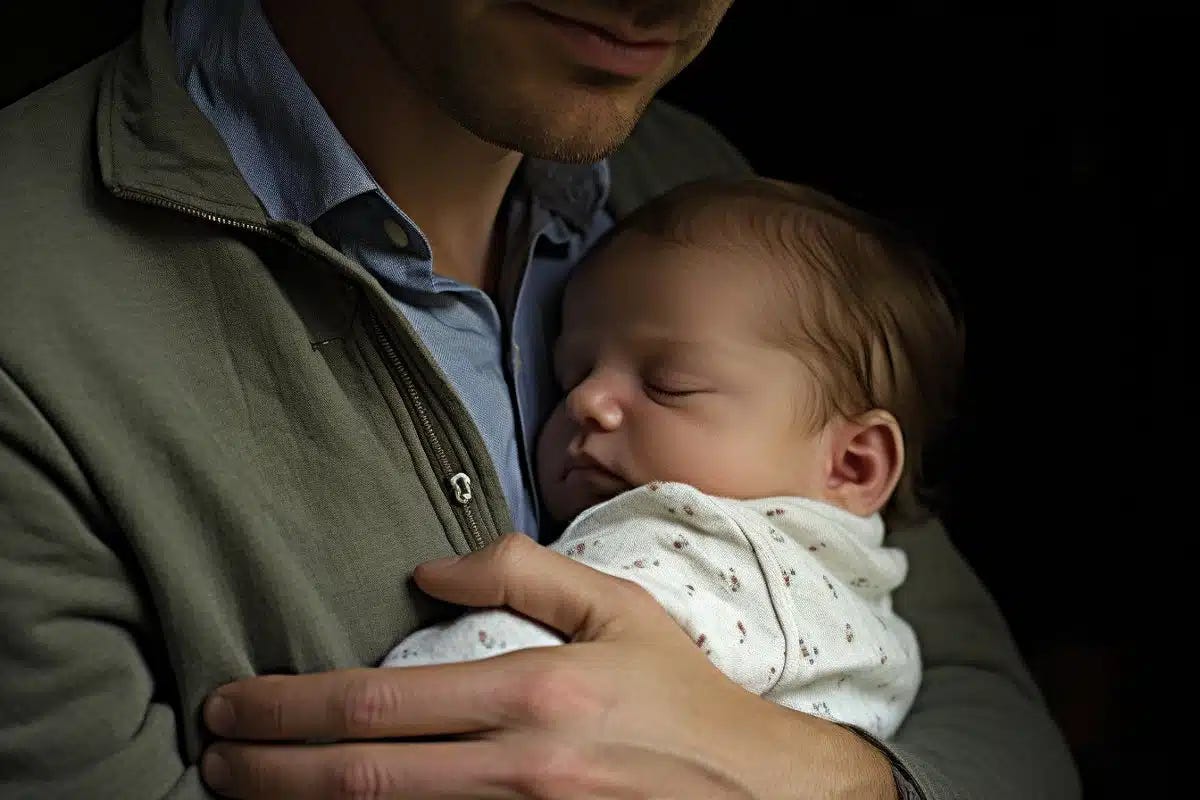
A novel study explores the curious phenomenon of why the majority of people prefer cradling a baby in the crook of their left arm. Research suggests that around 75% of individuals, regardless of their handedness, instinctively use their non-dominant arm to cradle a baby.
Several theories, including the possibility of improved heartbeat or hearing communication, have been proposed. However, the most likely explanation is the convenience of keeping the dominant hand free for multitasking while holding a baby.
Key Facts:
Research involving 765 participants aged 4-86 found that 75% of people cradle a doll in the crook of their non-dominant arm.
The prevailing theory suggests that this behavior is linked to our preference for keeping the dominant hand free for other tasks.
The phenomenon primarily applies to holding babies, as adults tend to use their dominant and stronger arm for carrying heavier children.
Read more→ AandP.info/naw




